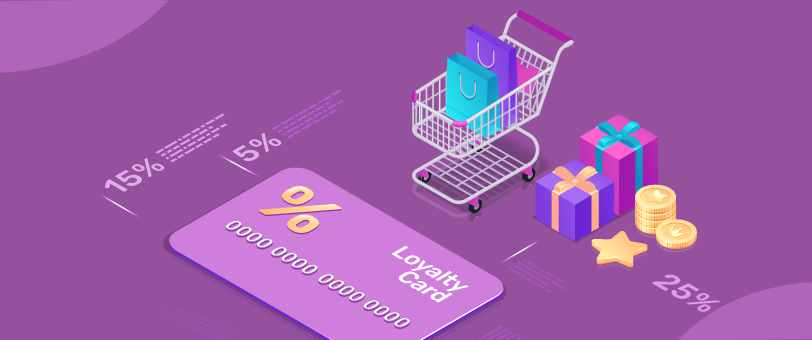

Banking is more competitive than ever before. Customers want a personalized, value-driven, and relationship-based experience and are not afraid to shift loyalties to fintechs if their expectations are not met. Faced with intense competition for a share of wallet from fintechs and technology giants, banks must not only deliver the superlative and seamless experience customers expect, but also maximize all revenue streams and leverage every business channel. Benefits and loyalty management in the banking and financial services industry is therefore critical to ensure relevant and seamless customer engagement.

Research from McKinsey indicates that 71 percent of customers expect personalized engagement from their banks and 76 percent are frustrated when this does not happen, making them more likely to take their business elsewhere.1 Right now, banks must focus on customer engagement strategies that deliver a great experience for customers with hyper-personalized pricing, offers, and rewards.
No Place for Silos in Customer
Engagement Strategies
To implement value-driven, personalized engagement models, banks must transform their existing systems and processes that are fragmented and lack a complete overview of customer relationships. For example, when it comes to loyalty and rewards programs, most banks still work with a product-level strategy. This approach does not consider the other touchpoints and relationships a customer has with the bank like investments, fixed deposits, loans and more. As a result, banks lack a comprehensive understanding of the customer’s relationship and business with the bank. This limits their ability to offer value-driven rewards and loyalty programs that deliver value to their customers. It is also a significant obstacle when devising personalized pricing strategies. Without an in-depth understanding of the customer’s total business value and relationship, the bank cannot offer truly personalized products and services. This can severely impact their profitability, and customer stickiness and may even potentially jeopardize future growth.



Integrated Value-based Loyalty Models
Many banks are now moving away from a silo-ed approach to a personalized customer engagement model. Total customer value is increasingly forming the basis of engagement strategies spanning pricing, offers, campaigns and bundles and loyalty.
For example, a leading Middle Eastern bank decided to adopt a more value-based customer loyalty model. Under their existing approach, they considered only the different levels of card usage – for example, card users were rewarded with some lifestyle benefits basis their usage. This approach did not consider the customers’ full relationship with the bank leaving many frustrated or disappointed with the rewards they received. A card user, for example, could be a high-value loan customer or have high net-worth investments with the bank. Rewards based just on their card usage could result in them feeling undervalued and eventually moving their business or part of it elsewhere. The bank decided to move to an integrated value-based loyalty model that looked at every aspect of the customer’s relationship with the bank. Under this system, customers were given scores or categorized into tiers based on their overall relationship with the bank. The higher their score or tier, the more their rewards. This system also allows customers to move up the scoring system based on the value of their business. They could also get downgraded if their business with the bank decreases. This helped the bank deliver better personalization and ensure customer satisfaction as well.

Another North American bank wanted to retain existing clients, deepen their relationships and attract new clients with a robust flagship client relationship model. This loyalty program for personal banking accounts gave customers greater value every day by offering savings on monthly account fees, rewards on debit purchases and more. This program too was based on a tier system that took into consideration the kind of deposit account held by the customer. Based on their account type and usage, customers were rewarded with a wide range of lifestyle benefits. Customers got additional benefits for holding other products over and above the deposit account. This promoted cross-selling of bank products and valued the customer’s overall relationship and rewarded them accordingly.
As the banking landscape gets more competitive and complex, there will be an urgent need to increase the lifetime value of customers. Towards this, banks must prioritize their customer value-driven engagement strategies. And to do this they need a robust technology framework that can break through organizational silos to present a comprehensive picture of a customer’s end-to-end relationship with the bank. The platform must be agile and scalable enough to handle large volumes of customer data. An automated state-of-the-art solution must also be able to monitor customer scores and correlate them against their ongoing spends to move them up or down the customer tiers and adjust rewards automatically. The platform must also be able to send alerts to customers on their current tier standing as well as allow them to track points, and enquire about points. The focus must be on ensuring greater transparency to customers – which offers they eligible for, what is their current standing, and how much more they need to move to the next tier. The existing infrastructure in most banks cannot support such advanced functionalities, and transforming it is expensive, risky, and time-consuming. Banks must consider partnering with experienced third–party providers who can deploy a robust middle-layer solution over their existing infrastructure that can drive insight-led customer loyalty programs. This can then bring in the capabilities and functionalities required to transform into a value-driven engagement model.

Banking is no longer a one-way street. Banks simply cannot afford to not transform their engagement models to establish deeper connections with their customer base. Value-driven rewards programs and customer scoring mechanisms that assign customer scores or tiers to users based on their relationship is a win-win strategy for both parties involved. A robust technology platform is an invaluable asset for banks in this transformative effort.